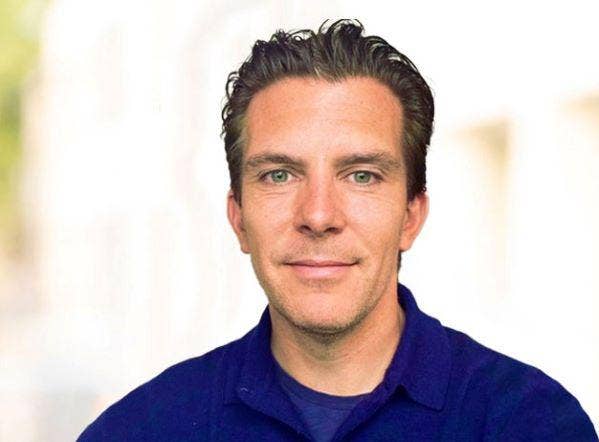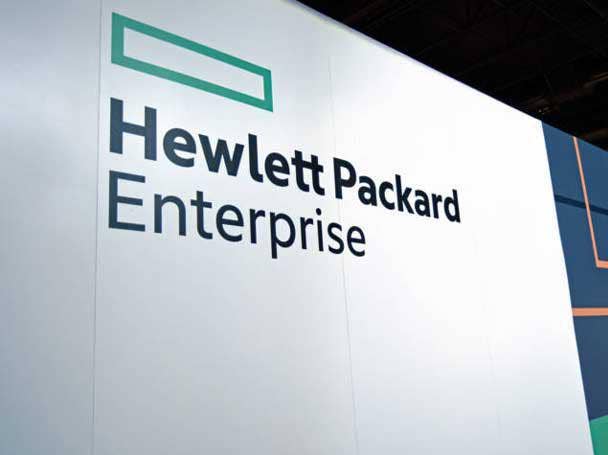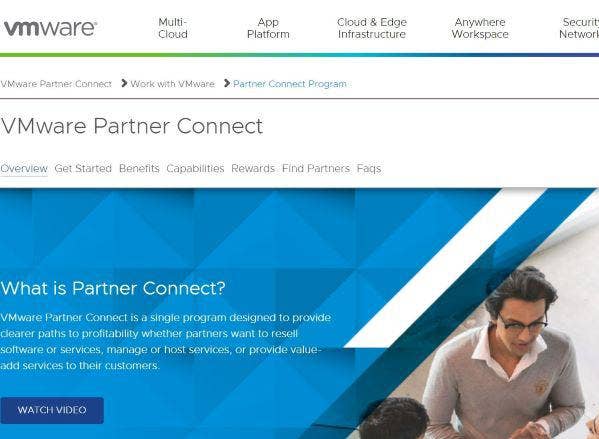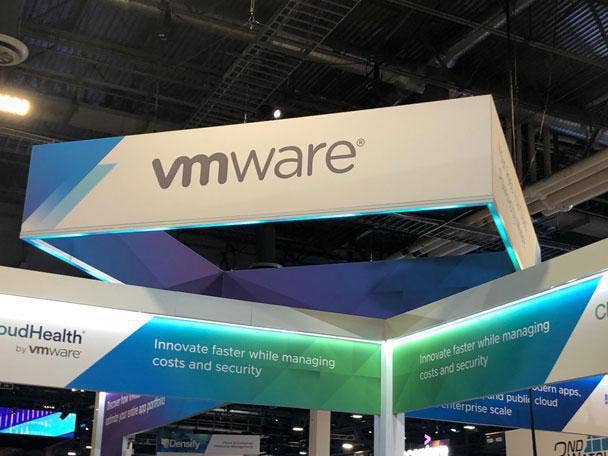VMware Channel Chief Talks HPE Bond, Lenovo, And Partner Connect 2.0
Vice President and Head of VMware’s Worldwide Partner and Commercial Organization Ricky Cooper says channel partners will have more opportunities to succeed in more areas with Partner Connect 2.0.

In the four months since Broadcom said it would plunk down $61 billion to buy VMware, two of the company’s top channel executives have departed — with Bill Swales and Sandy Hogan taking roles at other companies.
The upheaval has thrust Vice President and Head of VMware’s Worldwide Partner and Commercial Organization Ricky Cooper in the role of “channel chief,” the conduit between the virtualization leader and its massive ecosystem of partners around the globe.
VMware’s channel is under intense scrutiny as partners have been outspoken about their concerns around Broadcom, which has historically disregarded small and midsize customers as part of its profitability strategy when acquiring software companies. Broadcom CEO Hock Tan has said repeatedly that the company plans to embrace the channel.
Cooper told CRN that VMware remains committed to creating an experience that rewards partners with an expertise in VMware commensurately with those partners who move large volumes of its products. To do that the company recently unveiled huge changes to its partner ecosystem, introducing new categories that better align its partner program with how its partners go to market. Additionally, VMware said it will balance rewards for partners, with slightly more emphasis on those providing superior professional capabilities.
“With the new Partner Portal, it increase our ability to have the right conversations with the partners who are really leaning in with VMware,” Cooper told CRN. “It’s recognizing who are your top partners and getting closer with them through information. I think at the moment, (before the portal launches in October) we haven’t got the ability to really understand every single partner and really drill down into their capabilities and help them in areas that they may not consider themselves.”
VMware also wants to help partners focus on driving operational efficiencies through the portal, by adding analytics to show partners where they might be missing opportunities for their business.
“So the discussions become a lot more pointed and a lot more, you know, a lot more insightful, as to where we can really drive profitability for our partners,” Cooper said.
Here is the full interview:

Channel trends today
What are some of the opportunities you are excited for partners to see now that VMware is an independent company?
What our aim is and you know, once we had the spin-out in November of last year, we got a really good five-year commercial framework agreement in place with Dell, and our aim now is, ‘Hey, let‘s look at the rest of the ecosystem and take some of the learnings that we had there with Dell, and spread that onto the rest of the ecosystem where we go a little deeper.’
So let me give you some examples. If I were to look at HP, and Lenovo, who may have been a little bit reticent to work with us in the past, they’re now in a position where they’re fully embracing us, and putting multi-year plans together with us to embrace the VMware solutions and bring the best to their customers and to their partners.
We’ve got conversations going on with HPE with Greenlake, with (Lenovo) TruScale, and really trying to understand not, ‘What’s in it from the VMware perspective,’ but ‘What’s in it from their perspective? What are they trying to achieve with their customer base, their partner base, and how do we fit into that? How do we – VMware -- become part of their ecosystem, not just them becoming a part of ours?’
So it‘s really working towards becoming a true partner to them. Whereas I think, you know, maybe we’ve tended to be a little bit “one-way traffic” in the past.

Can you give us any details, on any of those partnerships? How far along are those discussions, and can you tell me what might emerge from them?
From an HPE perspective, let me say that, you know, even attending HPE Discover, two months ago, we were greeted with open arms, access to all of the executives across HPE. We’re very excited about the future and, almost coming back together after that period of where we’ve been seen as the Dell house.
(We are) getting the sales forces together, working on joint account plans, and working on areas in solutions, such as ‘What are the top two or three solutions that we can really go together to market with and be seen as a strong partner, whether it’s HPE, Lenovo, etc. There’s nothing really to talk about just yet. There’s a lot of news that sort of building up in the background in regards to how we transact moving forward. We are certainly looking at how we embed ourselves in their offerings, and we’re going to be a lot more understanding to their needs, not just to ours.”

Stepping into this role, where are some of the areas that you want to look at, places where you want to change the focus, or where’s the ‘Ricky Cooper focus’ going to kind of come in?
Look. the whole marketplace is changing. We’re coming into a situation where (tier two distributors) have to reinvent themselves. They‘ve got to start thinking about, ‘Hey, how do we go to market now with the whole SaaS and subscription transformation happening?’ How does a distributor fall into that market? And marketplaces seems to be the answer. So getting close with them.
We’ve launched this new Partner Connect 2.0. Automation is a big thing for us. The ability to automate for our partners and to give them a real in-depth knowledge of profitability. So we‘ve got something called the Partner Portal that we’re launching across all of our ecosystem. So if you’re one of our partners, you can see your profitability, you can see what you‘ve been earning over the past few quarters, what the future looks like. It’s got your pipeline in there and drills down into areas specifically around solutions and products, where you may or may not have the credentials just yet. It may be an area of opportunity. So the discussions become a lot more pointed and a lot more, you know, a lot more insightful, as to where we can really drive profitability for our partners.

With that do you show partners kind of like where they’re leaving money on the table or opportunities? For example “Partners who have you know, X, Y, and Z solution, tend to also be able to sell this sort of solution” ?
Absolutely. You might be a partner that we’ve been doing exceptionally well with multi-cloud, but you may have real strong expertise Workspace ONE, and desktop deployment, this type of stuff.
Now you‘ve got this whole work from home mentality, partners are really interested in OK, ‘We’ve got our customers up and running, what‘s the next stage? How do we enrich this workspace?’
So, if partners say, ‘Hey, we’re not even qualified in this area. How do we go about those qualifications and how do we make this work for our, for our opportunity as a partner with VMware?
It also shows them where they‘re earning rewards, where their potential to earn rewards would would be greater if they followed certain areas. So there is a lot more granular detail for them to make sure that they’re able to affect the business with VMware, and sort of demystify that VMware business and make it easy to do business with VMware. It‘s a simplification.
What can you tell me about the “self-service” capabilities that Partner Portal 2.0 will provide for resellers?
It‘s a great opportunity for us to capture a market. It’s something we‘ve done extremely well with the large enterprises and with the large cloud and accounts. It’s an area for us to really sort of double down here with the more transactional and commercial customers that we have. We‘ve had a good start with some of our partners, Dell being one of them.
All of our partners at the moment are bring in brand new customers never bought from VMware before. Or they certainly haven‘t bought in the last three years.
That self-service will then be the next step into evolving that even further, you know, if we‘re looking at currently the top 25% of the commercial business, this will enable us to go further into that business as well. That’s what its all about. Automation and simplification.

One of the partners I was talking to the other day said, ‘Look, I spent a lot of money on hiring really good VMware engineers and making sure that we have really good VMware engineers. There are other partners that don‘t spend that much money on hiring really good engineers. What I’d really like to hear from VMware is: How are they going to drive revenue towards me towards my business? Not incentives or MDF funds.’
I think that’s where the new tiering in Partner Connect comes in. It’s engineered to reward those that are not only investing – and you quite rightly mentioned the rewards on the back end -- you‘ve got to be able to demonstrate your value in the new system.
The incentives I think it said, it‘s, 90 percent towards, how well you transact and then 10 percent is weighted towards capabilities. But, you know, even that it’s kind of missing the point of what the partner asking, which is, he‘s saying is he sees VMware driving deals towards partners that are that are, more transactional, as opposed to driving deals towards folks like him that are that have, invested a lot in the engineers and the capabilities.
We’re giving them the ability to segment themselves within this new partner model that we have.
Do you drive deals into those new categories to qualify partners? Or is that is that part of it?
It’s recognizing who are your top partners and getting closer with them through information. I think at the moment, (before the portal launches in October) we haven’t got the ability to really understand every single partner and really drill down into their capabilities and help them in areas that they may not consider themselves.”
With that partner portal that I was talking to about before, our ability to then have conversations, the right conversations with the people that are really leaning in with VMware, with the partners that are really supporting us.

So it sounds like what the partner was asking is sort of answered by the revisions to the program. In other words this is a way for VMware to understand the partner’s business much more thoroughly?
Yes, but then when you couple that with the power of the partner portal it gives us the ability to have a meaningful discussion with our partners, and guide them in certain areas to educate them in certain areas, and equally for them to see it. This portal was for them. They can make some of these decisions themselves. We’ve not had the ability to do that. So the automation, coupled with Partner Connect 2.0 is really going to give us a lot more detail, a lot more granularity. It’s what our partners have been asking for: make it simpler to do business with VMware.
Can they use VMware Ignite as well?
Right. Absolutely. So all of these things coming together at the same time, really shows an evolution for us in our in our partner model. We still have a long way to go, but what an exciting time for us to be in this marketplace right now. And that‘s what we’re trying to embrace.